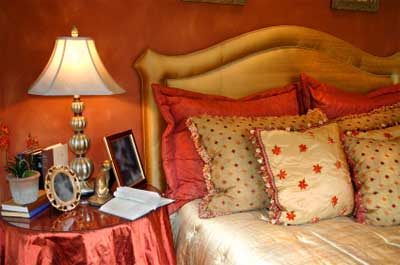Candela, Lumen, Lux
These measures will help you to understand how light is qualified and quantified. It is helpful to understand what the lighting sales person is telling you and if they are actually giving you the correct fitting or information. After reading and comprehending this section you’ll be able to understand what they are talking about and if they actually know what they are talking about. To follow are the measures and a guide for illumination required to particular areas.
Candela
This is the initial unit of light specification. It is the luminous intensity. One candela is defined as a small white-hot cavity. It is actually equal to about 1 large wax candle. (Hence candela /candle).
To illustrate the intensity some examples are given below.
Simple Torch bulb – 1 candela
60-Watt tungsten bulb – 50 candela
Twin tube fluorescent tube – 400 candela
Lumen
This expresses the quantity of the light. (Luminous flux) e.g. 1 candle gives of 1 candela of light but that light goes in all directions so the total quantity of light is measured by the amount that is given in all directions.
Bicycle lamp – 10 Lumens
150-Watt spot lamp (tungsten) – 2,000 lumens
140-Watt sodium street lamp (emission) – 13,000 lumens
Lux
This is the measurement that is used to measure the illumination of a surface. (Light on the surface). E.g. 1 lux is provided when a luminous flux of 1 lumen falls on each square meter.
Summary
It all started with candlepower as the measurement system for artificial light, and has evolved from that. To gauge for yourself and get a general idea of lighting intensities the following are the lux levels that you would commonly be exposed to. So next time you are looking at an object or in a particular situation, think about the lighting level that you see and then start applying what you have learned here.
A general living room in a house – 50 lux
Offices workbenches studios – 500 lux
Under overcast sky – 5,000 lux
Under direct sunlight – 50,000 lux
Areas/tasks and a guide to their minimum illumination requirements for the home.
Area: Hallways
Measurement taken: from floor
Lux: 150
Area: Stairs
Measurement taken: at tread Lux: 150
Area: Living rooms
Measurement taken: at working plane
Lux: 50
Task: Casual reading
Measurement taken: at book
Lux: 150-250
Casual reading using a side lamp.
Task: Sewing
Measurement taken: At desk
Lux: 300
Task: Studying
Measurement taken: at desk Lux: 300-400
Area: Bedroom floor
Measurement taken: at floor
Lux: 50
Area: Bed head
Measurement taken: at bed
Lux: 150
Area: Kitchens
Measurement taken: at floor
Lux: 100
Area: Kitchen work area
Measurement taken: at bench height
Lux: 300-400
Area: Bathroom
Measurement taken: at floor
Lux: 50-100
Area: Bathroom
Measurement taken: at sink/mirror
Lux: 400
Area: Halls and landings
Measurement taken: floor
Lux: 150
Area: Stairs
Measurement taken: treads
Lux: 100
Area: Workshop
Measurement taken: bench
Lux: 300-400
Area: Garages
Measurement taken: Floor
Lux: 50
The quantity of light is not all-important. Good lighting is made up from many things:
The amount of light.
The color of the light.
The light source.
How it models the object and how glare is controlled.
Written by Chris Brown

